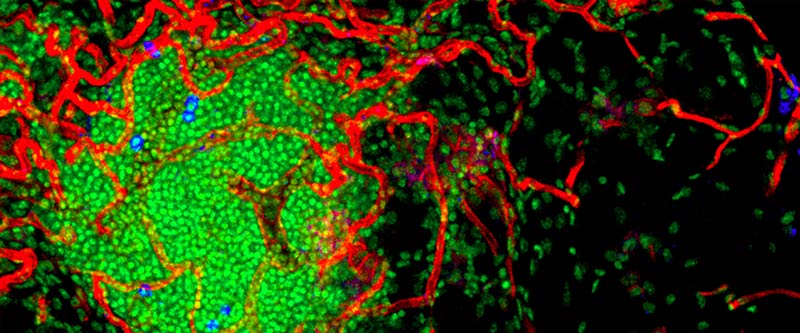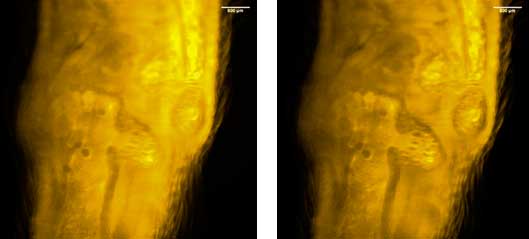Improved spatial resolution
Most common LSFMs use a Gaussian beam that propagates normally to the detection axis illuminating the sample, and the resulting fluorescence is imaged onto a scientific camera. The use of Gaussian optics results in an inherent tradeoff between the field of view (FOV), characterized by the Rayleigh length of the beam, and Z-resolution (i.e., along the optical axis of the detection objective), as characterized by the beam waist. Thus, a high Z-resolution of ~300 nm can only be achieved for a small FOV of ~2 mm, and the Z-resolution rapidly degrades to several microns for a FOV >10 mm. Attempts to extend the FOV without compromising the Z-resolution have included:

The axial (i.e., the optical axis of the excitation objective) superposition of two light sheets. This creates more out-of-focus blur because it is very difficult to align both sheets in XYZ.
Axial sheet sweep combined with camera rolling shutter. This configuration can only be used in set ups with horizontal light sheet and is done by moving the flat light beam in the same direction as the camera’s pixel reading (rolling shutter). Even though this option enhances the spatial resolution, it makes the reading of the camera very slow and the acquisition time of each image very long.
In our system we are using a technique of tiling multiple image stacks, with axially displaced light sheets. In similar configurations the results are demonstrating the efficiency of the method compared with Bessel beam illumination setups, but with the drawback of a longer time for large volume imaging. We overcome this drawback by using specific Region Of Interest (ROI) areas of the camera instead of the whole sensor and our extremely fast in depth scanning speed.
As an example, you can find below two pictures of a mouse paw sample, cleared with BABB. On the left image, our x-sweep is not used while the right image shows improved XY resolution due to the x-sweep function:
